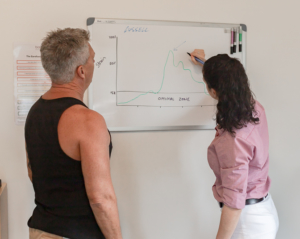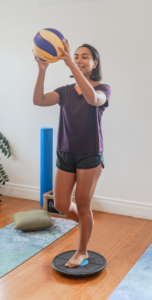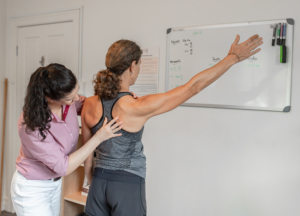 Hi everyone, I thought I’d put a blog together about the often unknown aspect of Physiotherapy – performance enhancement. Most often people come to us for rehabilitation or pain relief. However, an equally important role we play in working with clients is for injury prevention and performance enhancement. In this blog I’ll quickly discuss what pain is. Then I’ll discuss the the difference in seeing a Physiotherapist purely for performance enhancement, that is: to make you faster, stronger and more flexible.
Hi everyone, I thought I’d put a blog together about the often unknown aspect of Physiotherapy – performance enhancement. Most often people come to us for rehabilitation or pain relief. However, an equally important role we play in working with clients is for injury prevention and performance enhancement. In this blog I’ll quickly discuss what pain is. Then I’ll discuss the the difference in seeing a Physiotherapist purely for performance enhancement, that is: to make you faster, stronger and more flexible.
What is Pain?
Pain is initially our body’s way of telling us that there is a threat or danger. Sometimes, pain stays long after tissues have healed. Sometimes you don’t even know why pain is there at all since you never had an actual injury! Since pain is so complex, it really shouldn’t be the main thing we use to guide whether we are moving well. The ideal time to address the physical nerves, muscles and joints is actually before there is pain!

Accumulative strain
Accumulative strain can start building without a specific mechanism. This means it can be our daily sustained postures, or repetitive and continuous activities. Our body will adapt, but sometimes when this load becomes increasingly demanding, the body can no longer tolerate it. Often, we notice the initial change with tightness or tension, but this is then followed up by symptoms or pain signals if a change is not made.

What happens next?
Pain can cause muscles to tighten, irritation of nerves or a change in movement patterns. Pain could also cause the recruitment of different muscles to support others. At this point when you come in to physio, we have to calm the body down. We “deload” the strained areas, then slowly and gradually build it back up. Increasing the tolerance of those tissues again.
Seeing a Physio before Pain
If you come in BEFORE pain, we can assess your movements by the first point of resistance. this is what we call R1. Then we can improve these movements before the body intervenes. We look specifically for signs of muscle activation. This may be adapted movement patterns that can be seen and felt to indicate that the joint/muscle/nerve does not want to travel through its full range of motion.

The benefits of a full body assessment
Our full body assessment will check all your main movements (from neck and shoulders, all the way down to ankles and big toe). You don’t need a specific area of pain for us to get started on. The other important thing to note is that everyone doesn’t have to be moving in the ‘right’ or the same way. Our expertise is within all forms of movement. We’ll find what works best for YOUR body.
Getting this specific and thorough insight to how your body moves best and how it has responded to load over time will give you key areas to work on. With those key areas being treated your movements will improve. Your training or workouts will feel even better. Getting ankle or hip range better can get you over a plateau with squatting or improving ankle and foot proprioception. This will help your trail running, or lifting more in the Gym. Having full shoulder range will improve your training for a more powerful tennis serve, or stronger pulls with your swimming stroke.
Examples of how Physiotherapy could help you
Here are some examples of people who are not in pain but could benefit from physio:
- Constant feelings of being tight or restricted and wanting to move better
- Recurring ankle sprains, muscle strains that have disrupted getting back into activity smoothly
- Starting a new activity and want to ensure your body will handle it
- Maintaining where you are at now, and having a tune up to see if there is strain accumulating anywhere
- Athletes (weekend warriors included) who want to improve performance





